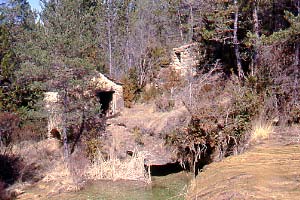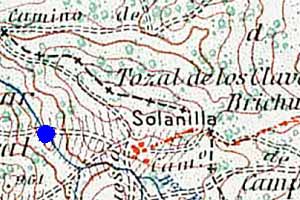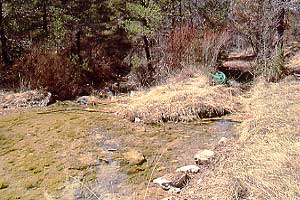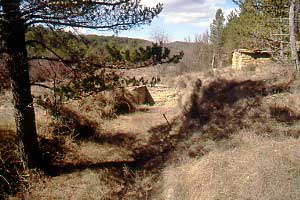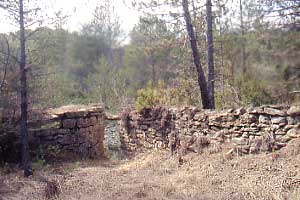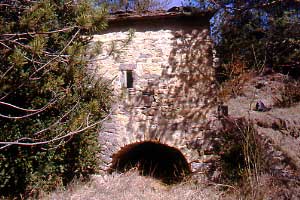Path: Introduction -
Visit the mills; catalogue - Solanilla

Mills in Alto Aragón - harinero
Solanilla

Solanilla, or Solaniella on some recent maps,
though remote nowadays is not too difficult to reach. Take the main road between Boltaña and Lanave where
near the
The molino is situated less than a kilometer away from the village. From the church (south of the village) follow the path leading to the west into the valley. After about half a kilometer you should get at the river near the start of the canal. It may be necessary to walk a bit hence and forth to find the exact spot. From there follow the channel and after less than 400 m you'll come at the mill. The mill is built on the Barranco Ricau.
Molino Escartínis signposted. From Aineto —though I prefer the walk— it is possible to continue by car to Solanilla.
The molino is situated less than a kilometer away from the village. From the church (south of the village) follow the path leading to the west into the valley. After about half a kilometer you should get at the river near the start of the canal. It may be necessary to walk a bit hence and forth to find the exact spot. From there follow the channel and after less than 400 m you'll come at the mill. The mill is built on the Barranco Ricau.
Pictures: 23.iii.2008
